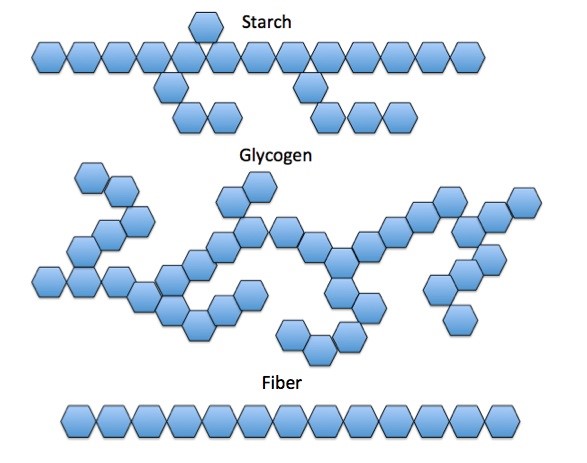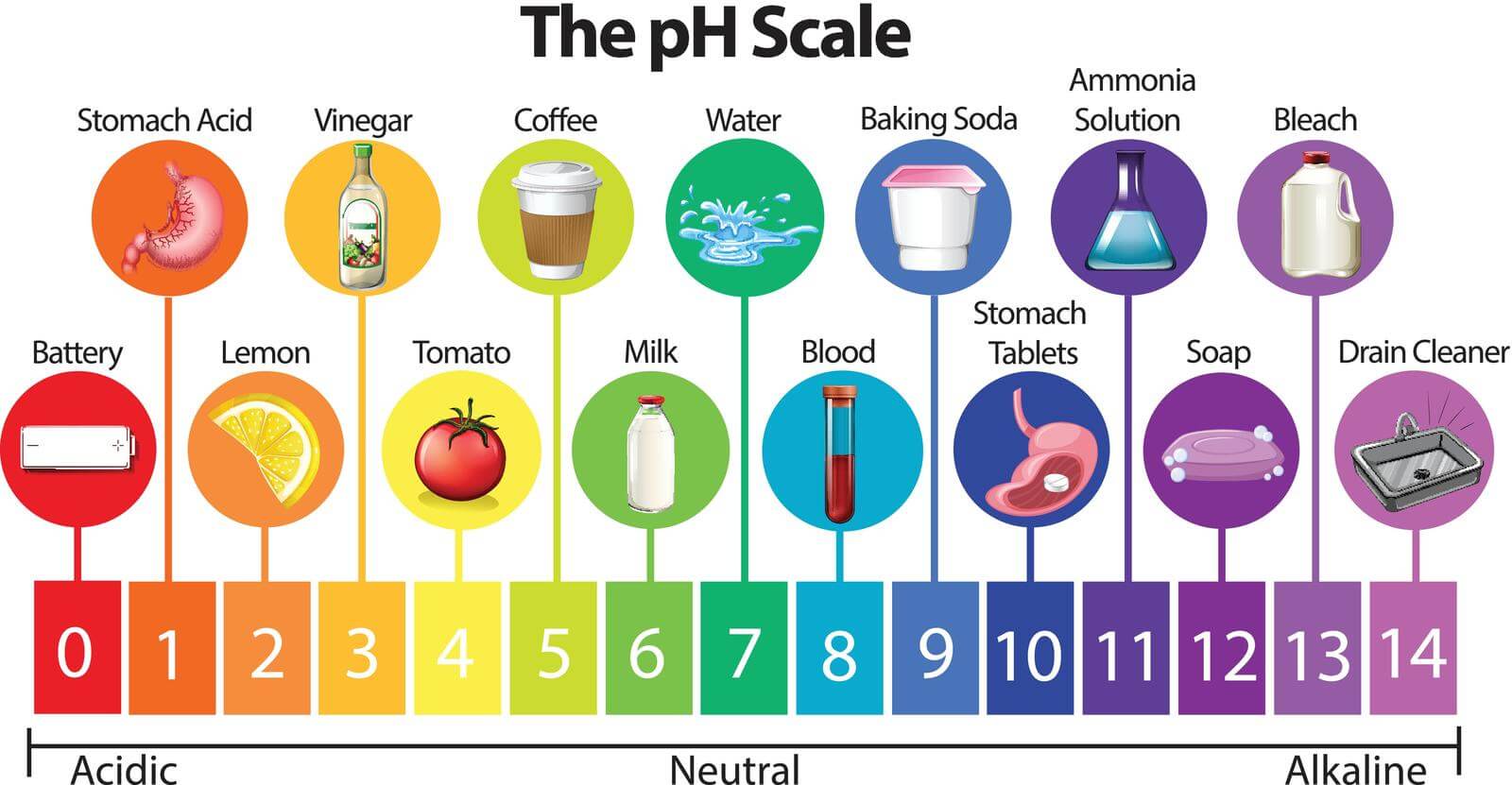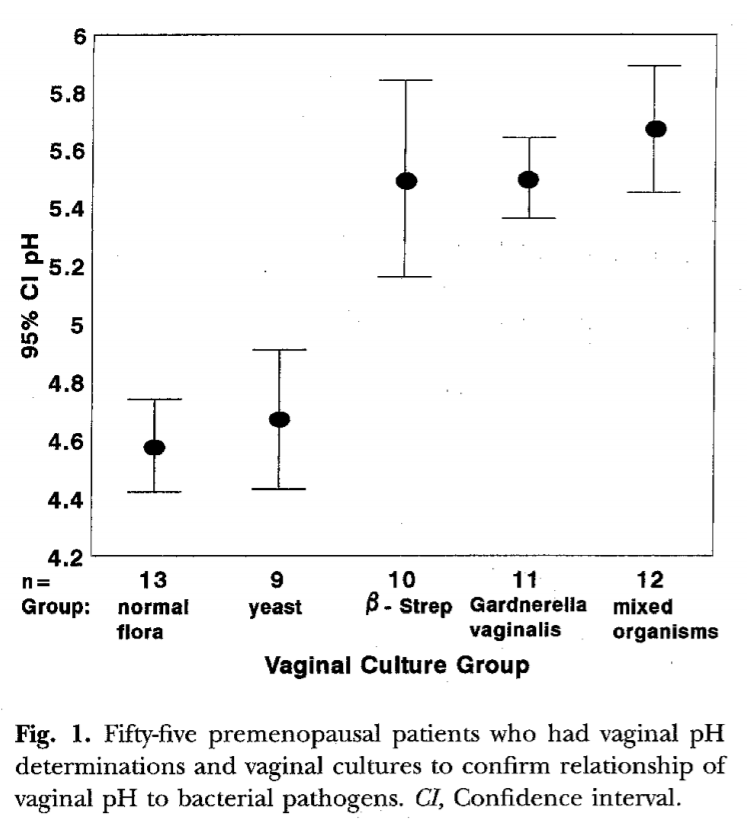See all "Menstruation" Section Topics

A yeast infection during ovulation is likely related to vaginal pH. At the onset of ovulation, estrogen levels drop dramatically, and luteinizing hormone spikes to its highest level. One study, published in the American Journal of Obstetrics and Gynecology [1997 Jun; 176 (6):1270-5], demonstrated how these two hormones change vaginal pH.
The study analyzed 172 women and retrieved vaginal cultures from 82 of them. The researchers reported that estrogen levels were inversely correlated; and, follicle-stimulating hormone was directly correlated with vaginal pH. Thus estrogen causes pH to fall, and luteinizing hormone causes pH to rise.
During ovulation, estrogen is low; tending to raise vaginal pH. Also, at the inception of ovulation, follicle-stimulating hormone levels are high; also tending to raise vaginal pH. Consequently, at the start of ovulation, your vagina will tend to be the most alkaline.
Candida fungi, the yeast responsible for yeast infections, cannot thrive well in acidic environments. When your vagina becomes alkaline at the beginning of ovulation, it is a more ideal environment for Candida to overgrow and cause infection. The chart below will illustrate typical hormone levels of premenopausal women throughout the menstrual cycle.

Luteinizing Hormone and Candida
Another hormone, luteinizing hormone, also plays a role in causing a yeast infection during ovulation. A study conducted by Kinsman, et al., showed that luteinizing hormone caused Candida albicans to grow germ tubes (hyphae) in its presence.
The study was published in the journal Mycoses [31:617-626]. These tendrils Candida can grow, increase its pathogenic ability; thus these types of “in grown” yeast infections are more difficult to deal with. This may be one reason why the infections during ovulation you have had, might have been more severe.
A 1/2 Day & Yeast is Gone!
Linda Allen suffered from yeast infections for years. Through researching natural medicine & Candida, she found an efficacious solution!
Linda is one expert you want on your side! Let her show you how to get rid of a superficial yeast infection in just 12 hours; AND, keep it gone!
A 60-day, 100% money back guarantee is provided.
Visit Official Site!Estrogen Enriching Vaginal Sugar

As the article yeast infection before a period explains, estrogen causes vaginal cells to start enriching themselves with a carbohydrate known as glycogen.
As the above chart illustrates, estrogen levels are at their highest right before ovulation; thus, your vaginal cells have taken on some of this sugar as a result. When estrogen levels drop, your vagina will become more alkaline.
Thus, at the start of ovulation, there is enough sugar for yeast to feed on, and a more conducive pH environment for yeast to grow in. This could be why you seem to regularly experience a yeast infection at the start of ovulation.
A study, published in Endocrinology [76.1 (1965): 63-69], proved that estrogen levels were directly related to glycogen synthesis in rats. When the rats were given up to 1 mcg of estradiol (an estrogen hormone), the rate of glycogen synthesis in the rat uterus increased at a constant rate in the hours after the hormone was administered.
Giving doses of estradiol (estrogen), at more than 1 mcg, did not cause greater estrogen synthesis than 1 mcg doses of estradiol. This probably indicates that the glycogen synthesis mechanisms in the rats were operating at their maximal level—at doses around 1 mcg. Therefore, adding more estradiol could not increase glycogen synthesis mechanisms beyond their maximal capacity.
Since estrogen levels peak shortly before ovulation, this likely causes a buildup of glycogen in the vagina. When this sugar is present, the yeast in the vagina have a feeding frenzy, multiply, and cause an infection around ovulation.
If you are taking estrogen birth control pills, you are also adding more estrogen into your body. It is likely that the birth control pills also push estrogen levels above their norm; causing more glycogen to be synthesized in the vaginal tissue.
Eliminate Bacterial Vaginosis & Vaginal Odor
Jennifer O’Brien is one prominent expert on BV that knows how to get rid of vaginal odor. BV is a common infection that you don’t have to put up with.
Jennifer will show you how to naturally eliminate vaginal odor in just 3 days.
A 60-day, 100% money back guarantee is provided.
Visit Official Site!Lowering Vaginal Sugar and pH Levels

One way to reduce the amount of available sugar in the vagina, while simultaneously acidifying the vaginal canal, is to introduce probiotics. Many species of Lactobacillus produce lactic acid as they eat up sugars and other available nutrients in their environment.
Thus, if you take a efficacious probiotic supplement orally, and insert the supplement into your vagina daily, you should be able to better control Candida outbreaks.
Exercise can also help your body to metabolize excess sugar, and may help to reduce the amount of sugar in the vaginal tissue. Yet, if you are taking estrogen via some pharmaceutical, light exercise may not reduce the sugar levels in the body. You may have to perform extremely exhaustive exercise to do this; due to the excess estrogen in the body.
A study that demonstrates how this could happen was published in the Journal of Applied Physiology [63.2 (1987): 492-496]. In this study, rats that had their ovaries removed were given doses of estradiol, and then subjected to exercise.
The rats who had received the estradiol were able to exercise for longer periods of time than the control group of rats. The study also found that, submaximal exercise in the estradiol treated rats, seemed to not reduce the levels of glycogen in their bodies’ tissues. The researchers concluded, that the estrogen hormone caused the body to preserve glycogen in the tissues of the body during light exercise.
Therefore, you may find that your estrogen birth control pills stop you from reducing the sugar in your body—even though you did some mild aerobic activity!
Research has also demonstrated that pathogenic bacteria are associated with an elevated vaginal pH. It may be, that your vagina’s normal bacterial flora has become unbalanced with not only yeast, but harmful bacteria. The research demonstrating this, was disclosed in the American Journal of Obstetrics and Gynecology [176.6 (1997): 1270-1277].
The study showed, that those women with bacterial pathogens, all had significantly elevated vaginal pH levels. Among these women, 11 were positive for Gardnerella vaginalis, 10 were positive for beta-hemolytic streptococci, and 12 had mixed aerobic pathogens. The chart below shows the results of the study’s analysis. The chart illustrates how vaginal pH (y axis), and testing positive for bacterial pathogens (x axis), were related.

The way to ameliorate this situation naturally, is to use an essential oil that is both antifungal and antibacterial, such as oregano essential oil. You can also use an herb that is antifungal and antibacterial like garlic to cleanse the vagina. Adding hydrogen peroxide to the vagina will likely clear out some pathogenic bacteria as well. But remember, it is essential to re-establish the good bacteria to keep your vaginal microbiota healthy. L. acidophilus for yeast infections is a great choice when adding probiotics to the vagina!
Clair Goodall: Author & Nature Lover
Clair Goodall is a bee-obsessed natural medicine convert from Minnesota. She is one expert you might want to know more about!
Clair will help you protect you and your family from toxic products and chemicals and help you discover solutions from nature.
Also, Clair’s book is backed by a 60-day, 100% money back guarantee
Visit Official Site!At Home Treatment Plan
Candida Hub has a natural treatment plan using a few common natural ingredients that are typically present in most homes. You can start using this plan to start your journey towards a yeast free life. If you’d like to know more you can read the article homemade yeast infection cure. There are also other related articles in that section of the website about over the counter pills for yeast infection.
If you don’t find what you're looking for there, feel free to browse the other topics on this website; there is a lot of information to digest!
A Natural, 12 Hour Yeast Infection Cure

According to a research paper published in Clinical Microbiology Reviews [12.1 (1999): 80-96], Candida species are quite ubiquitous organisms. Candida are most frequently present in the mouth; and, live in 31% to 55% of healthy people. The species that causes approximately 70% to 80% of all Candida infections is C. albicans.
The Chinese Journal of Obstetrics and Gynecology [2011 Jul;46(7):496] reports there appears to be a correlation between intestinal Candida infections and vaginal yeast infections. And, this provides a clue, as to why yeast infections in general, can reoccur.
This study states, in 148 cases of vaginal candida infections, 33.1% of the women were infected in both the intestines and vaginal area. The recurrence rate of yeast infections, in women with simultaneous intestinal infection, was significantly higher than for women who did not have an intestinal infection.
This study concluded that vaginal yeast infections are highly associated with simultaneous intestinal Candida infection.
As research appears to indicate, systemic Candida infections can and do happen. A more systemic Candida infection may primarily get a foothold in the intestines; and cause a wide array of problems. If your yeast infections keep happening, a systemic Candida problem may be why.
One woman who suffered from a systemic Candida infection, for about 12 years, was Linda Allen. The systemic Candida infection that attacked Linda caused a wide range of health problems in addition to yeast infections.
Some of these problems, Linda describes in her own words in the following quote:
To be honest, it was hard to pinpoint exactly what was wrong: I wasn’t really sick, but I wasn’t really well either. I had listlessness, fatigue, brain fog, stomach ailments, unexplained rashes, skin infections, and so on. It seemed like every day brought a new challenge.
My energy was sapped and I felt exhausted, which affected my grades and put a big dent in my social life.
Linda Allen’s symptoms included an embarrassing vaginal discharge, severe itching, and burning sensations. Her infections were difficult to deal with, and Linda’s health problems cost her financially as well. Linda states these infections of Candida can become excruciating when they happen as frequently as a menstrual period.
Yet, Linda spent a great deal of time in research; and even questioned health professionals who were kind enough to share some time with her. Linda even tried an array of purported "cures." Although it took a while, eventually, Linda put together a natural treatment plan she hoped would solve her Candida situation.
After spending about a year refining her new approach, Linda tried her system on herself. It worked amazingly well. Linda even returned to a few medical doctors to get tested for the presence of infections. These tests revealed all indicators of infection had vanished! Linda was indeed well again, after such a long, difficult journey.
Linda has since published a book detailing how to copy her success. She also includes a 12 hour yeast infection cure that can get rid of a superficial (such as a genital yeast infection or oral thrush) yeast infection in about 12 hours.
Linda’s publisher protects those who get her book with a 60 day, 100% money back guarantee. Linda’s publisher, a subsidiary of the United States based firm Keynetics Incorporated, is a reputable digital retailer that has been around for a long time. They have great customer service, and make getting a full refund on Linda’s book quick and easy. If you’re not satisfied, you can quickly get all your money back.
If you would like to learn more about Linda’s journey to freedom from Candida, see reviews of others who tried her natural system, or find out more about her efficacious book; you can find more information at Linda Allen’s website.
Author: Mr. Nicholas Gross

Nick Gross is a natural medicine enthusiast who has been researching and writing about natural medicine since 2008. Nick is primarily a web developer but also researches and authors written and video content about natural health. Nick has a bachelor’s degree in Management Information Systems from the University of Northern Iowa.
Disclaimer
The information on this website is not a prescription for anyone. This information is for informational or educational purposes only, and is not a substitute for professional medical advice or consultations with healthcare professionals.
Affiliate Disclosure
Some of the links provided on this website are affiliate links. When a purchase is made through these links, Candida Hub earns money from commission. This helps to keep the website up and helpful to people for free. Thank you for any support!
Stay Up to Date
If you enjoyed this article, consider following / liking our Facebook page. This page is primarily utilized to alert followers of new articles that are put on Candida Hub. Candida related news is also discussed. While you are there, you can see what has been more recently added to Candida Hub.
SOURCES:
- http://dx.doi.org/10.1016/S0002-9378(97)70345-4 — Vaginal pH as a marker for bacterial pathogens and menopausal status. American Journal of Obstetrics and Gynecology [1997 Jun; 176 (6):1270-5]
- http://dx.doi.org/10.1111/j.1439-0507.1988.tb04416.x — Effect of mammalian steroid hormones and luteinizing hormone on the germination of Candida albicans and implication for vaginal candidosis. Mycoses (31:617-626)
- http://dx.doi.org/10.1210/endo-76-1-63 — BITMAN, JOEL, et al. "Kinetics of in vivo glycogen synthesis in the estrogen-stimulated rat uterus." Endocrinology 76.1 (1965): 63-69.
- http://www.ncbi.nlm.nih.gov/pubmed/3654408 — Kendrick, ZEBULON V., et al. "Effect of estradiol on tissue glycogen metabolism in exercised oophorectomized rats." Journal of Applied Physiology 63.2 (1987): 492-496.
- http://dx.doi.org/10.1016/S0002-9378(97)70345-4 — Caillouette, James C., et al. "Vaginal pH as a marker for bacterial pathogens and menopausal status." American journal of obstetrics and gynecology 176.6 (1997): 1270-1277.
- https://doi.org/10.1128/CMR.12.1.80 -- Fidel, Paul L., Jose A. Vazquez, and Jack D. Sobel. "Candida glabrata: review of epidemiology, pathogenesis, and clinical disease with comparison to C. albicans." Clinical Microbiology Reviews [12.1 (1999): 80-96].
- https://pubmed.ncbi.nlm.nih.gov/22041440/ -- Lin XL, Li Z, Zuo XL. "Study on the relationship between vaginal and intestinal candida in patients with vulvovaginal candidiasis." Chinese Journal of Obstetrics and Gynecology (Zhonghua fu chan ke za zhi). [2011 Jul;46(7):496].








